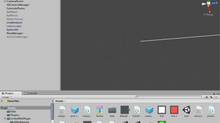PComp | Week 1 | What is Interaction?
This post was edited because... I wrote it before I went through the readings!
The word "interaction" has the prefix "inter-", which denotes a between state, and it implies reciprocality of actions. An interaction, therefore, require each party to be able to affect each other, and does not count a one-way causal relationship.
In the context of contemporary society, I think it is interesting to discuss the different layers of interaction and the power held by humans over their devices.
Would we call opening an umbrella as having "interaction" with the umbrella? Instinctively, it sounds really unnecessary call it an "interaction", because it seems to us that is a one-way causal relationship. We open the umbrella, and that's about it. The umbrella does not affect us in any way.
But I would argue that in order for us to properly affect or use an umbrella, the umbrella needs to give us a feedback to indicate that it has changed its state, i.e. closed to open, vice versa. A change in the center of gravity, a thud, a vibration; these are the things that we, humans, can sense to determine if the umbrella has changed its state, even without looking at it. There is input, and there is output that results in another input. So maybe, "interaction" is an apt word to describe it, and to describe any use of tools that exist in the world.
/*
Extra note (1): This was the point that Bret Victor elaborated much more fluently in his article. I totally agree with his point that our hands could do so much more than the swipe gesture.
*/
Regardless of the definition, this is definitely a failed interaction
However, it can also be said that "interaction" with simple tools like an umbrella lacks complexity and meaningful significance that the word has come to connote in these recent years. A human can interact with another human being or another creature, and human can interact with computers. These kind of interaction connotes a certain degree of intelligence, or a profound effect. It is as if interaction is another word for communication.
/*
Extra note (2): Chris Crawford argued that a good interactivity has 3 layers: Listening, Thinking, and Speaking. While this framework provides a very useful mode to create and/or critique interactivity, I had a hard time agreeing to the "Thinking" component, because I view computers (discounting AI) as non-sentient.
Here I quote René Descartes, "I think therefore I am".
The word "thinking" to me, therefore, implied a sense of self-interest / sentience, which computers do not have.
What I could agree with is that computers could meaningfully process and interpret human's output, and in turn solve humans' more complex problems.
===
Using Crawford's definition and criteria, it can be said that VR goggles are not interactive. They enrich the experience of viewing, but do not offer meaningful exchange of input or output.
While the goggle could meaningfully interpret the position of the user head, this input is often not consequential to the displayed output (i.e. the story in the video continues anyway).
That said, I am quite confused with 360º videos like the following.
It seems like this video has the same inconsequential relationship between user input (head position) with the output (the story), but what is interesting here is that if the user chose to just stare towards the floor, he or she could watch the entire video without seeing Annabelle. So, there is a change in meaning. Does it mean that VR goggle & 360º video are interactive?
*/
So, let's define the layers of interaction as such: a basic level of interaction is exchange of physical input and output. The next layer is when ideas could be exchanged, as is the case with human-to-human and human-to-computer interaction. And I would propose that there is an additional layer, on which the affect to one of the parties in the interaction is often non-verbal and subconscious.
To look at this layer, it is necessary to look at interaction not as just a single instance, but as multiple instances repeated over time. The advent of touch screens, for one, has arguably diminished the importance of tactile sensations. Another example is how our relationship with visuals, images, and cameras have changed greatly over the past few years.
The like / love button is an interface for our psyche.
So, I guess when I have to design some kind of interface or interaction, I will try to look at it from few different levels. Physical feedback is hygienic, the exchange of ideas should be intuitive, and it should have somewhat an affect on the human subconscious.
After all, as much as we think that we dictate technology, technology also dictates us.












